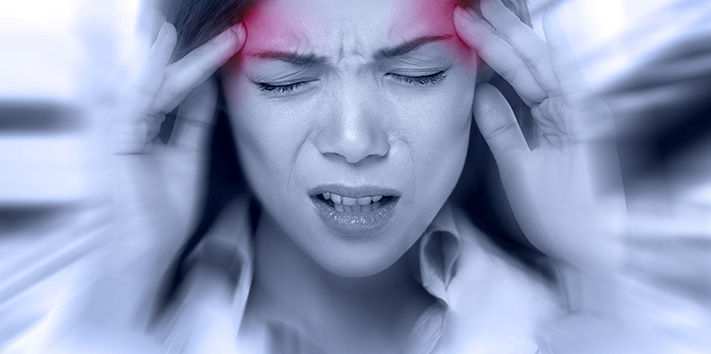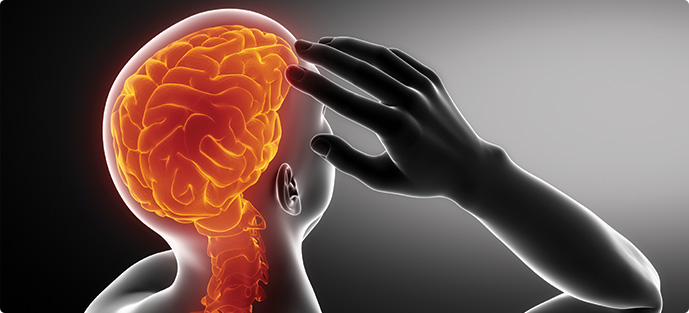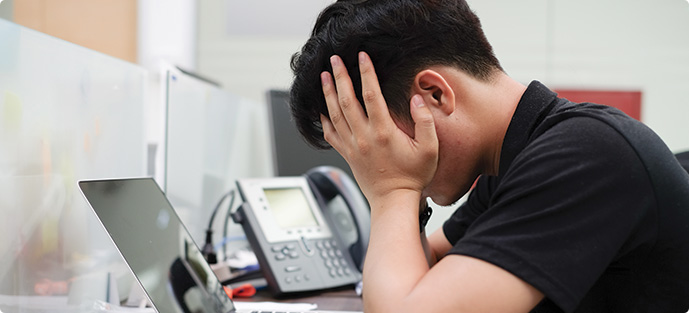
Migraine is a recurrent, throbbing, and often lifelong condition. More than just a bad headache, it typically affects one side of the head and is accompanied by one or more of the following distressing symptoms: nausea, vomiting, disturbed vision, dizziness, extreme sensitivity to sound, light, touch and smell, and tingling or numbness in the extremities or face. The symptoms vary from person to person and individuals may have different symptoms during different attacks. Attacks can last between four – 72 hours, and having migraine increases the risk for other physical and psychiatric conditions.
According to Professor Peter Goadsby, Professor of Neurology, King’s College London; “Migraine is an inherited tendency to have headaches with sensory disturbance. It’s an instability in the way the brain deals with incoming sensory information, and that instability can become influenced by physiological changes like sleep, exercise and hunger.”
There is no known cause for migraine, although most migraineurs are genetically predisposed to the condition.
Previously, the dilation and constriction of blood vessels in the head were thought to be the primary source of migraine pain, and early medications focused on the blood vessels as the principal target for treatment. Researchers now believe that migraine is a neurological disorder involving nerve pathways and brain chemicals. We know that migraine often runs in families, but genes are not the only clue; studies show that environmental factors play an important role, too.
If you are susceptible to migraine there are certain triggers which may commonly occur. These include stress, lack of food, alcohol, hormonal changes in women, lack of sleep and the environment.
Migraine with aura (classic migraine): Headache that strikes after or along with sensory disturbances called aura. These disturbances can include flashes of light, blind spots and other vision changes or tingling in your hand or face.
Migraine without aura (common migraine): This is when the pain alone is enough to stop you from carrying on your daily activities. This may be accompanied by nausea, vomiting, and more.

Migraine affects 11% of adults worldwide, occurring three times more in women, due to hormones. Migraine is less common in children and the elderly. Extrapolation from figures for migraine prevalence and attack incidence suggests that 3,000 migraine attacks occur every day for each million of the general population.
Among the recognizable burdens imposed on people affected by headache disorders are pain and personal suffering, which may be substantial, impaired quality of life and financial cost.
According to World Health Organization, while those actually affected by headache disorders bear much of their burden, they do not carry it all. Employers, fellow workers, family and friends may be required to take on work and duties abandoned by headache sufferers. Since headache disorders are most troublesome in the productive years (late teens to 50s), lost working hours and reduced productivity due to impaired working effectiveness are enormous.

No significant mortality is associated with headache disorders like migraine, which is one reason why they are so poorly understood and acknowledged; and frequently undiagnosed and woefully undertreated. There is currently no cure for migraines, although a number of treatments are available to help ease the symptoms. Usually, it is treated with anti-nausea drugs and abortive or preventive medications. Headache remedies include pain relievers. Also, changes in lifestyle habits for example staying hydrated, getting regular and adequate sleep and keeping a headache diary to recognize your own triggers can help prevent migraines and their frequency.
You are about to be redirected to an online retailer’s website. Getz Pharma is not liable for any data exchange on the new website
You will be redirected in 3secs
Disclaimer: "This message (including attachment) is intended solely for the use of the individual or entity whom it is addressed and may contain information that is confidential or privileged. If you are not the intended recipient of this message, you are hereby notified that any use, dissemination, distribution or reproduction of this message is prohibited and that, you must not take any action in reliance on it. E-mail transmission cannot be guaranteed to be secure or error-free as information could be intercepted, corrupted, lost, destroyed, arrived incomplete or contain viruses; therefore Getz Pharma (Private) Limited cannot accept legal responsibility for the contents of this message. If you have received this communication in error, please notify the sender or Getz Pharma (Private) Limited at [email protected] immediately and destroy the original message."
Close